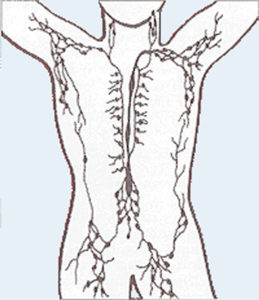
What is lymphoedema?
The lymphatic system is part of the body’s fluid regulation system and is made up of lymph vessels and lymph nodes which are often referred to as glands. This system transports lymph fluid and makes up part of the body’s defence and clearing systems.
Oedema is the medical word for swelling and therefore lymphoedema is a chronic swelling of the lymphatic system.
Lymphoedema is a risk in breast cancer and can occur following removal of lymph nodes during your surgery, or following some treatments like chemotherapy or radiotherapy. This damage can cause a build-up of lymph fluid in the surface tissues as the fluid cannot drain away as well along its usual route.
Where and when can lymphoedema occur?
Lymphoedema in breast cancer can affect any part of the arm, breast or hand on the affected side and can sometimes extend into the trunk.
Lymphoedema may occur soon after your surgery, chemotherapy or radiotherapy, but may not develop until much later. The majority of lymphoedemas occur in the first 2-3 years after treatment is completed but it is important to remember that there is a lifelong risk of developing lymphoedema, regardless of your age.

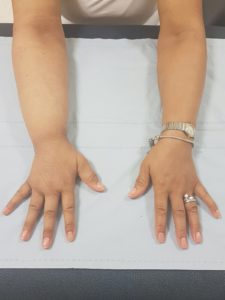

What is my risk of lymphoedema?
Lymphoedema is often mild initially and occurs in
- 5-10% of patients who have had a sentinel node biopsy
- 25-30% of patients who have had an axillary node clearance.
- There are other factors which may contribute to the risk including obesity, diabetes, infection and further injury.
However, it is really important not to ignore any recurrent swelling as it can get worse. We can help you to manage your swelling, should it occur, and aim to keep it as mild as possible.
Symptoms of Lymphoedema
The symptoms of lymphoedema can vary. It is important that you get advice if you notice regularly any of the following in the affected arm, hand, breast or chest area.
- Swelling
- Tightness
- Heaviness
- Aching
Should you develop any these symptoms contact your breast care nurse who may refer you to the lymphoedema clinic. You will be assessed and a treatment plan agreed with you, with the aim to encourage fluid to move away from the swollen area, reduce symptoms, and to stop the swelling getting worse.
Infection - Cellulitis
Breast Cancer treatment can affect the lymphatic system. This means you are at risk of developing an infection called cellulitis.This may develop on arm or breast, on your affected side.
Cellulitis is a non-contagious infection of the skin and tissues.It may be caused by bacteria that enters through a break in the skin, like a scratch, or an insect bite but can occur with no obvious cause. It can appear suddenly as a blotchy rash and presents with redness, pain and heat, which may spread quickly. You may also notice an increase in swelling.
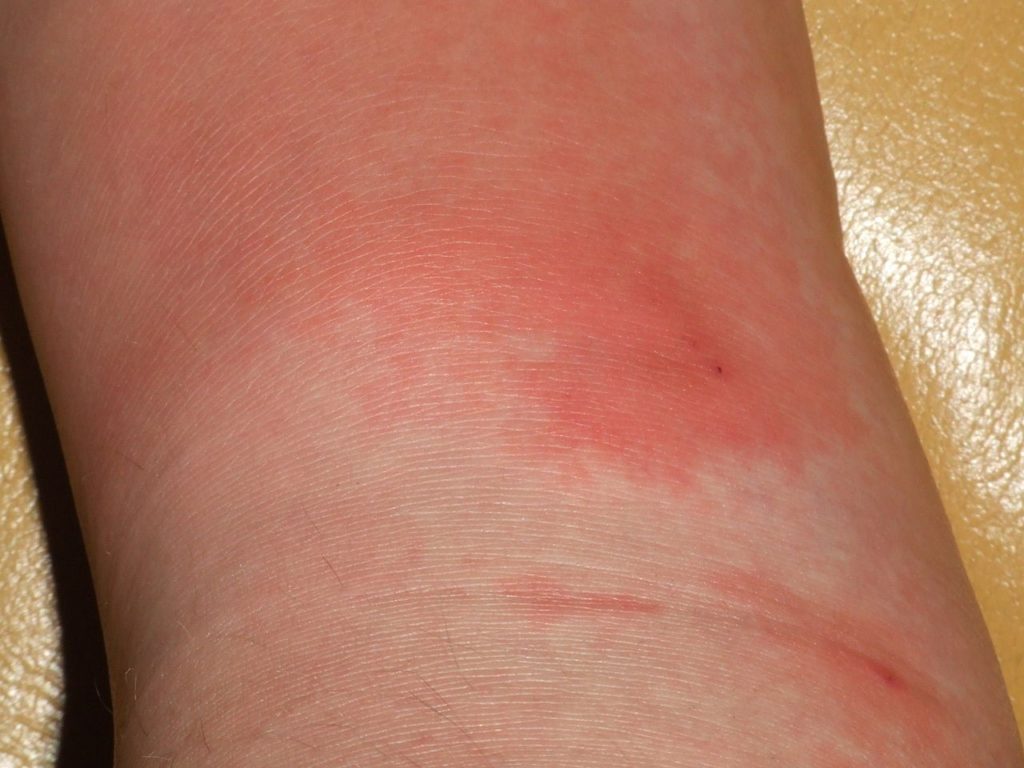
You may feel unwell with flu-like symptoms, which may include aches and pains, fever, headache etc.
If you think you have a cellulitis it is important that you visit your GP immediately as you will need antibiotics or if unavailable go to you nearest walk-in clinic or A&E. Early treatment can help to stop the infection becoming severe.
After a few days antibiotics the cellulitis should start to improve.It is very important that you take the full course of antibiotics, as prescribed.
Treatment for Lymphoedema
Before treatment for lymphoedema can begin you will have a thorough assessment by a lymphoedema practitioner. Treatment may involve skin care , lymphoedema exercises, self-drainage tecniques (simple lymphatic drainage SLD), and prescription of a compression garment.
Compression garments are in the form of a sleeve and sometimes a glove or gauntlet will be added. You will be advised on how much to wear these during the day, but they should not be worn at night unless you have been told to do so by your specialist.
If you have lymphoedema of the breast we will advise you on correct bra fitting which is vitally important and you will be advised to wear a soft bra at night time.
Some lymphoedema will need specialist treatment such as kinesiotaping, manual lymphatic drainage, intermittent pump and multilayer bandaging but this will be discussed with you.
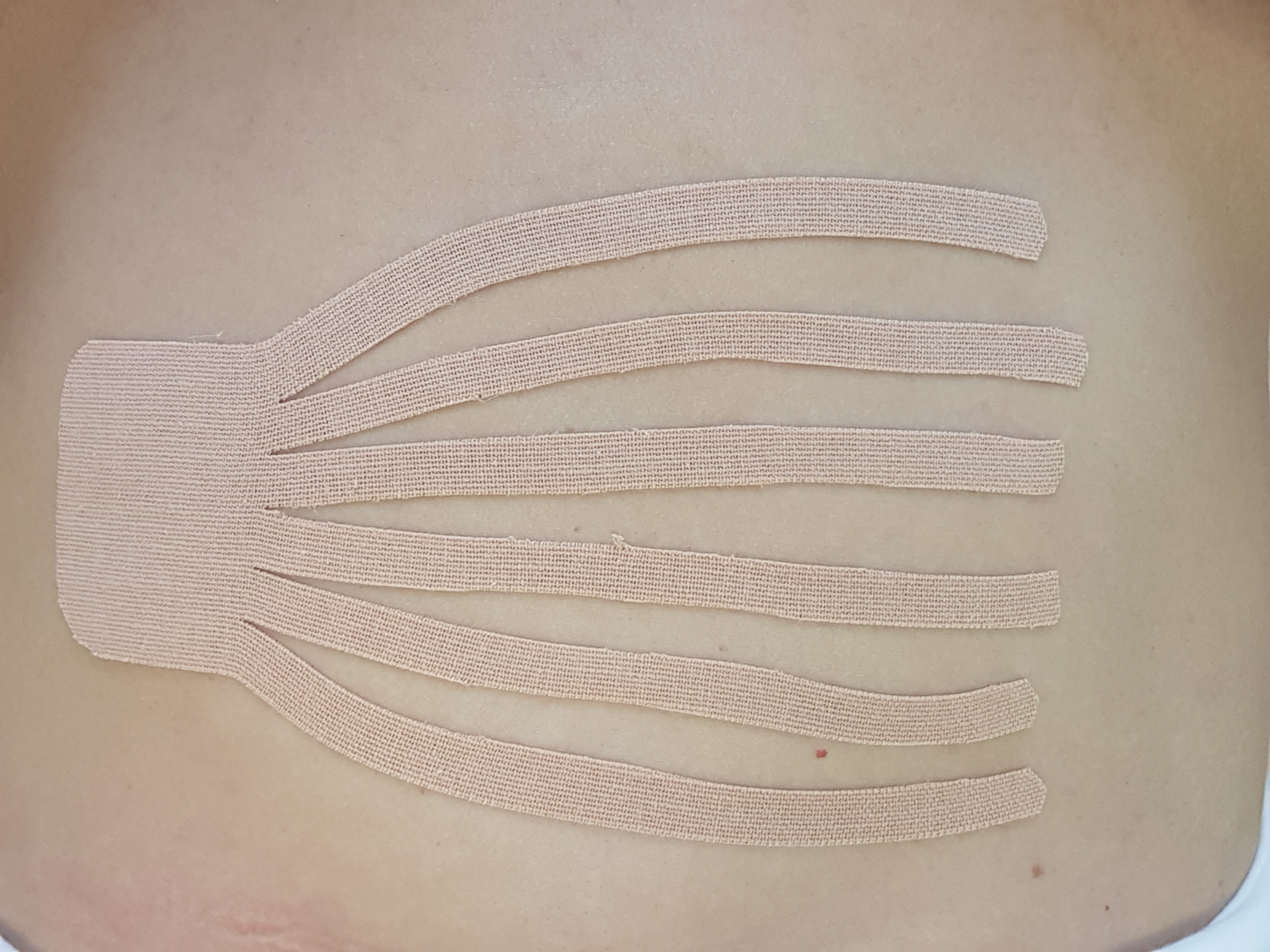
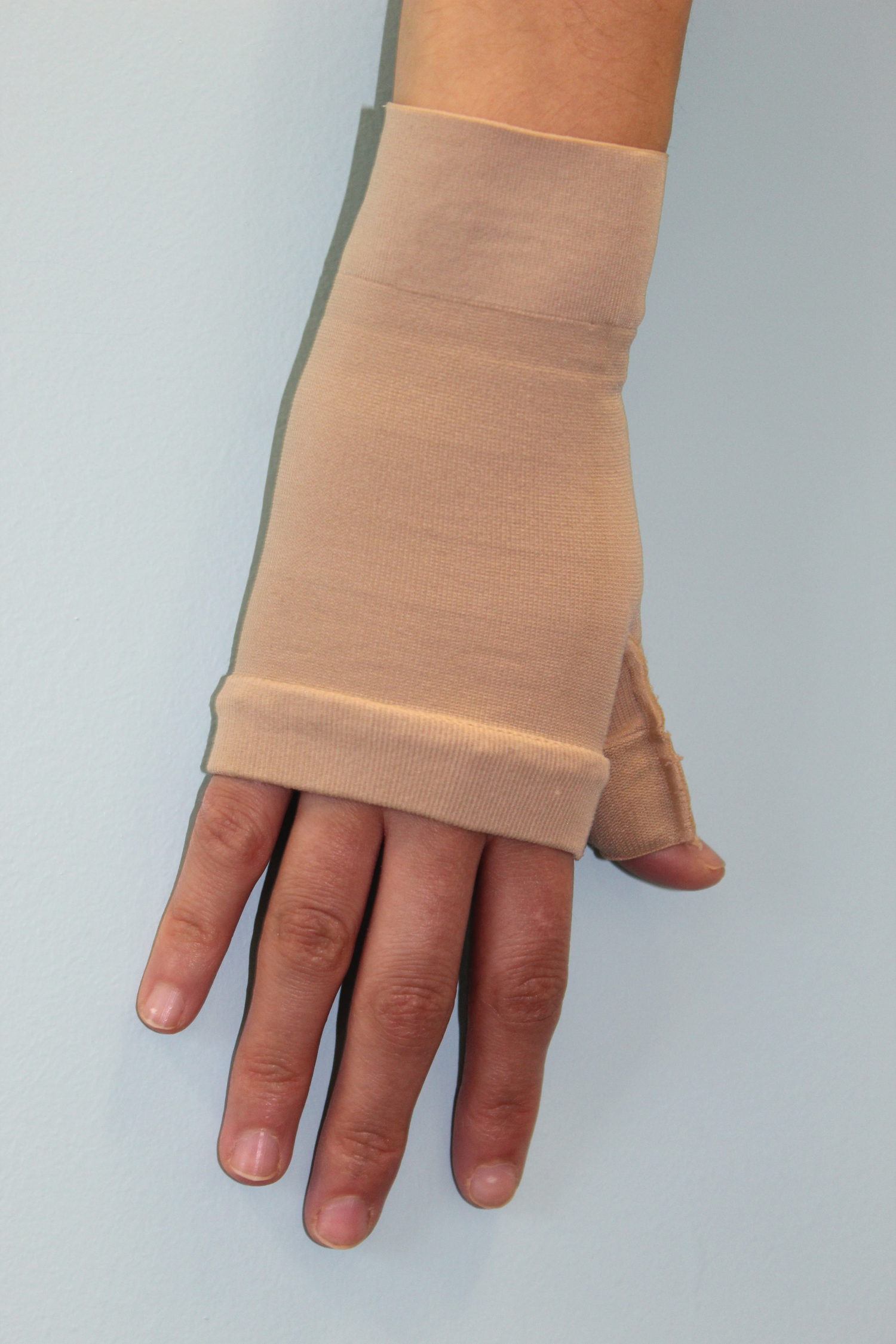
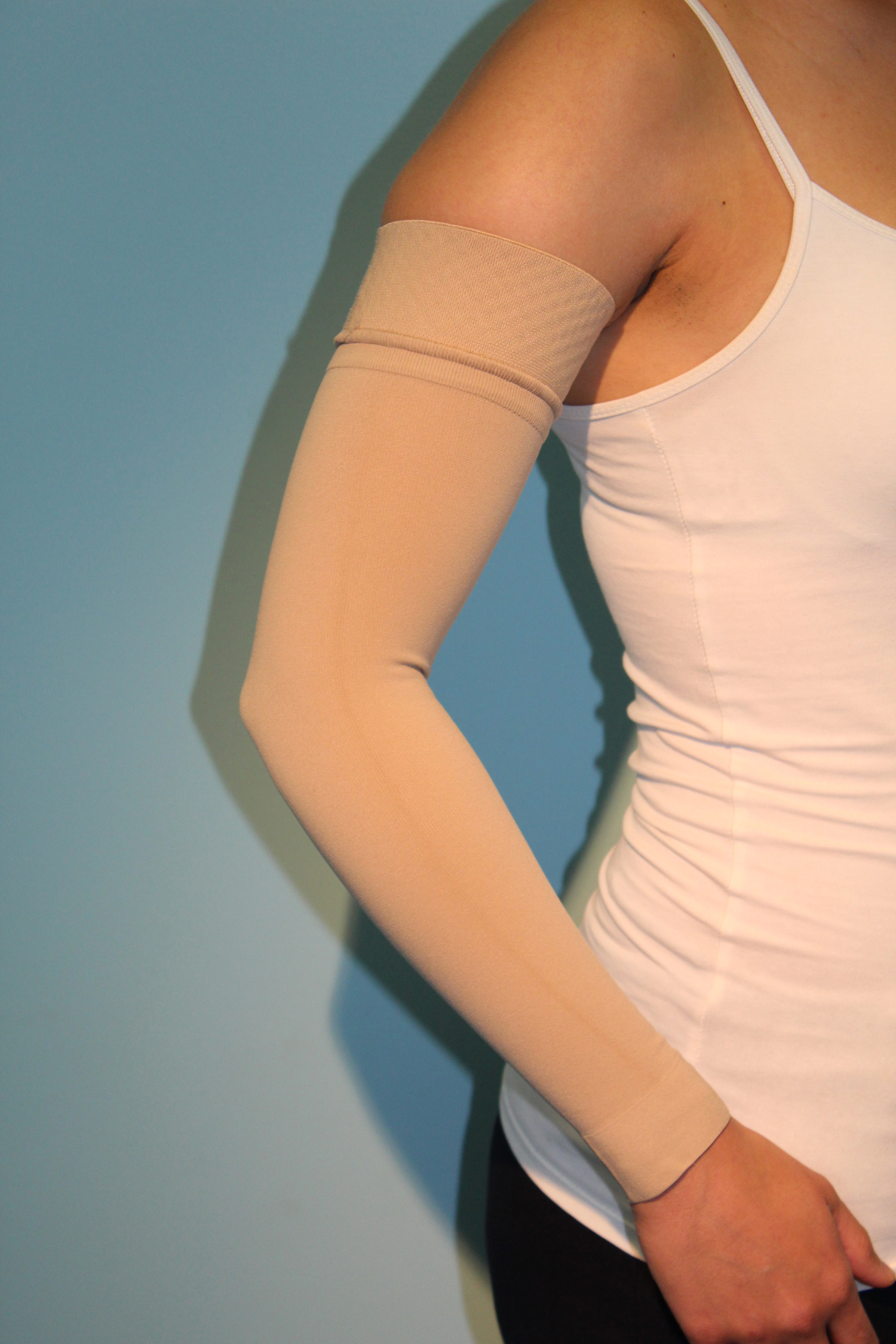
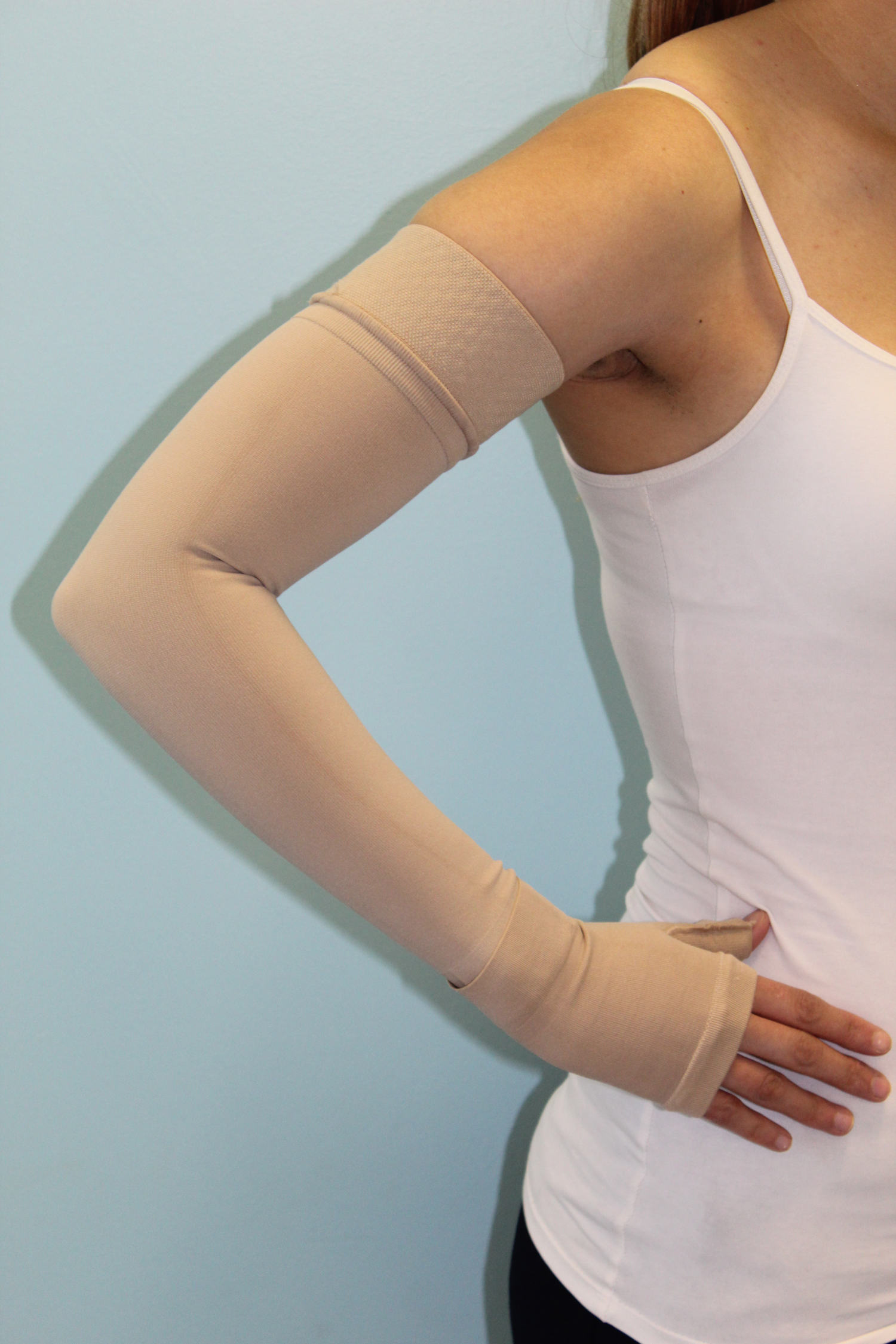
For further information
Contact your breast care nurse for referral to the lymphoedema team.